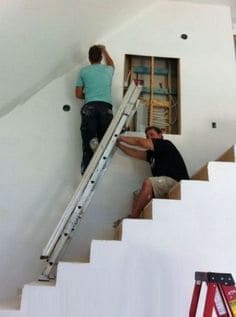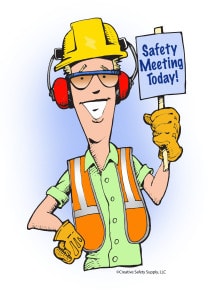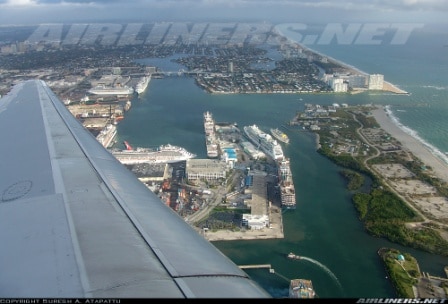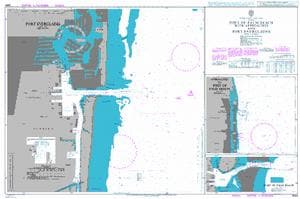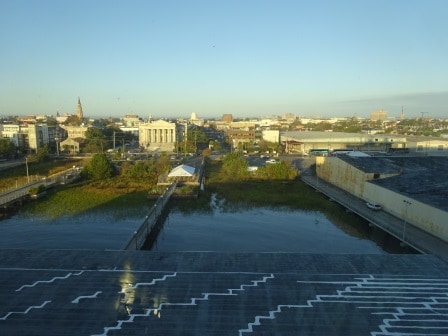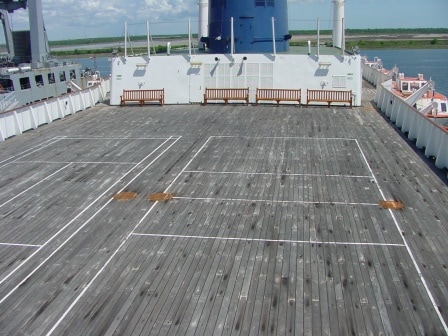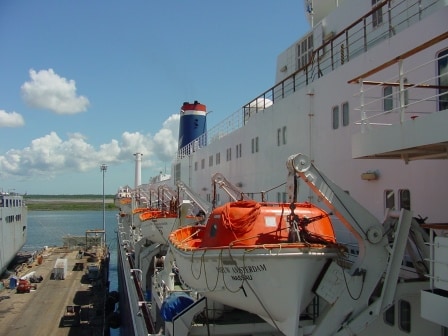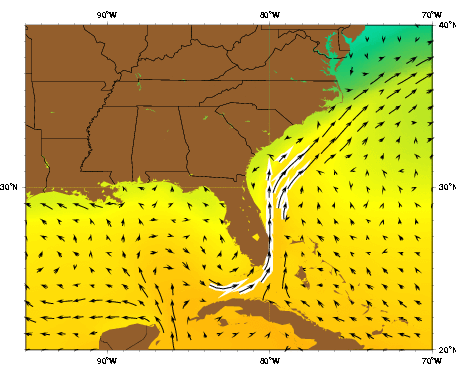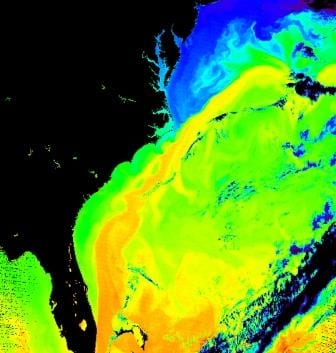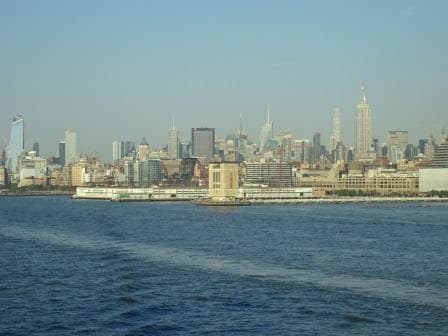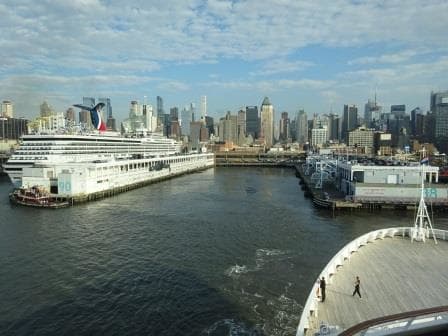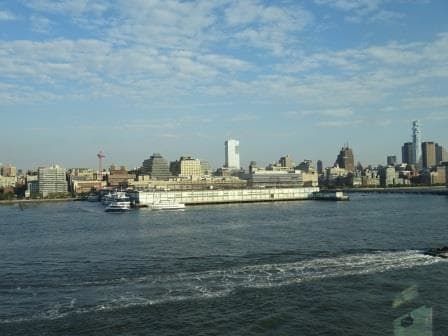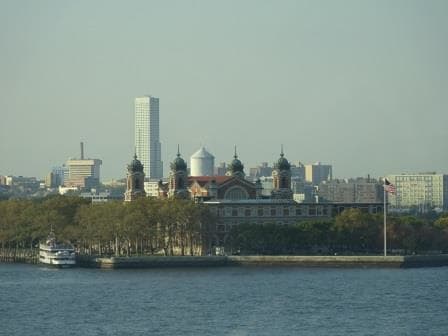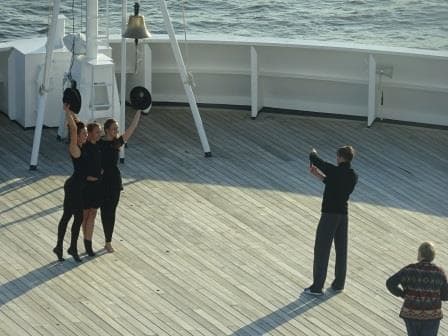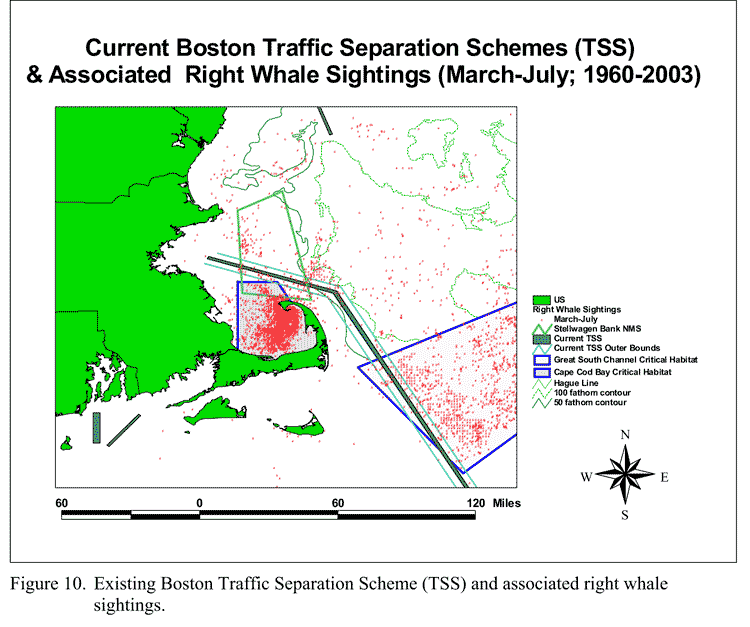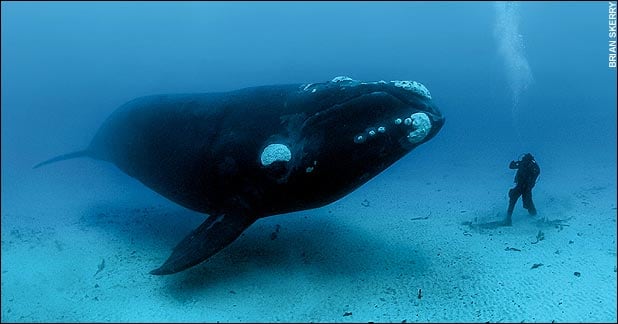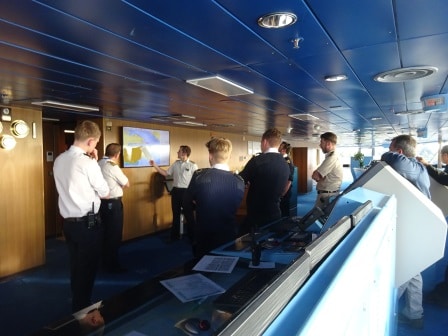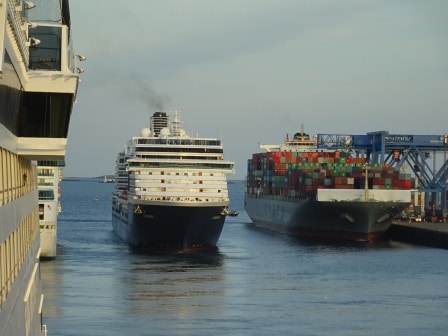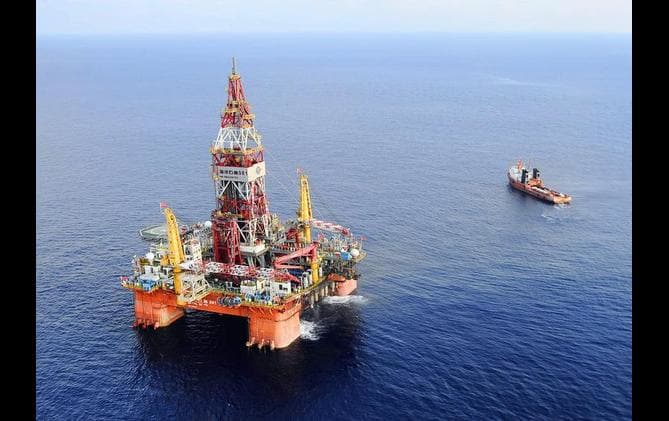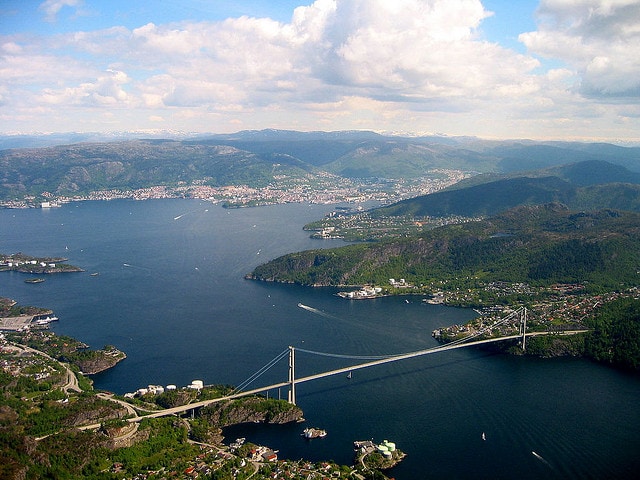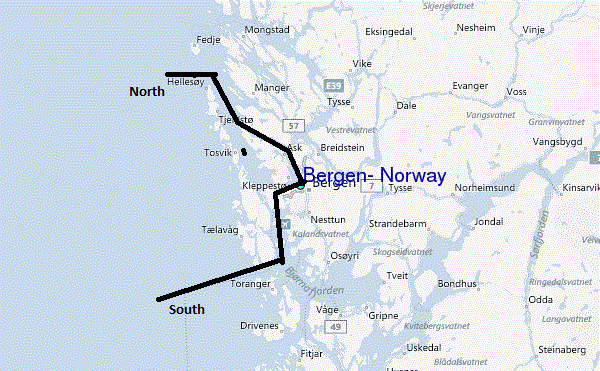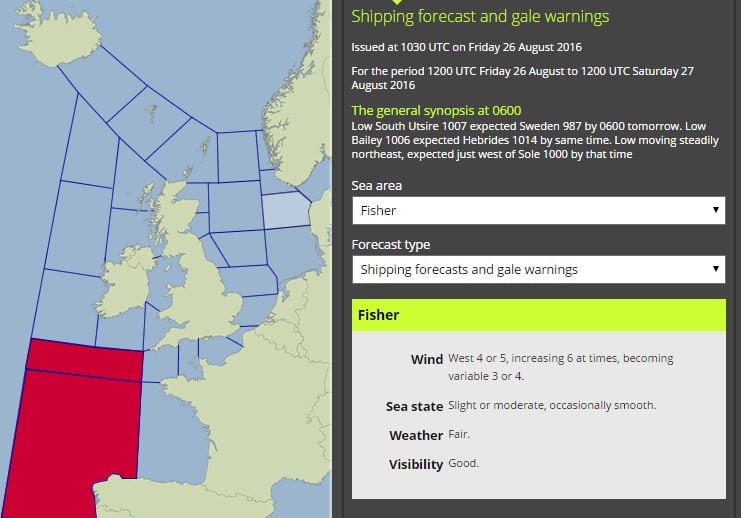By 07.30 we arrived at the anchorage area together with the ms Nieuw Amsterdam. Half Moon Cay is large enough to handle two mega liners at the same time, we do not have mega liners in our fleet, and thus the 3400 that came ashore had ample space to enjoy themselves. We did not see any lines anywhere except at the barbeque station around 1 pm. but that had more to do with the fact that everybody tends to go for lunch at the same time. Hence my personal Golden Rule on sea days, I go at 11.30 to the Lido as it normally noon time when the wave comes rolling in and that wave keeps rolling in until 13.30 hrs. and then suddenly it is all quiet again. (Except at the ice cream parlor)
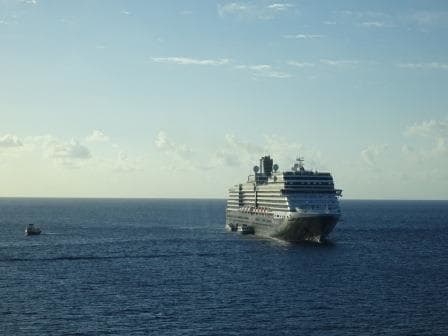
The Nieuw Amsterdam off HMC. Alongside the provision cutter Half Moon Clipper and Henry Hudson guest tender.
The wind was from the wrong direction for anchoring and thus both ships remained on the engines and floated. For an operational perfect Half Moon Cay day you need the wind from the north east, blowing over the island. Then the wind can make no swell, as there is no open sea to blow over, and the wind will push the ship away from the island so it can lay perfectly behind a stretched anchor chain. Today the wind was coming from the North West and then you are pushed towards the island and eventually end up on the beach. The island is rising so sharply out of the deep, that there is not enough room to swing around with the anchor down without hitting sand and rock somewhere. Thus we stayed on the engines and drifting in position. There was very little wind today and that made it very easy to stay in position and not to drift all over the place.
The Nieuw Amsterdam was on the shorter stay with a last tender scheduled for 14.30 as they had to make Ft. Lauderdale on time; it being the end of the cruise, and thus they were given the use of the large shore tenders. We were here all day and thus we provided our own transport during a very nice but very warm day. It got warmer and warmer while the day progressed as the wind decided to almost die down completely. So it was a very tropical day, but then we are on a warm weather cruise so we are delivering according schedule.
Back to Yesterday and safe working on board.
The list of five points yesterday indicated the way the company has setup its safety philosophy. First train the crew and then review with the crew involved what the challenge of the work is. As most of us are over 25 we forget things and then we make sure we also review and complete check list so that nothing is forgotten. Then we carry out the work while the supervisor is required to check in to see if all goes well. The frequency of checking really depends on the sort of work. If a sailor is painting, the Bo ‘sun maybe checks once a day, if it is working aloft, it might be once an hour but if the work pertains to a tank entry, then there is the requirement to have constant supervision present. Sitting in an enclosed steel tank is a lot more dangerous than happily sitting on a chair painting in the outside air. When a more complicated job has been carried out, then there is a review to see if any lessons can be learned to implement next time and then do an even better job.
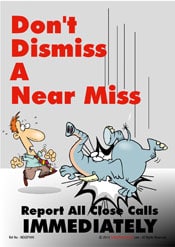
Things go seldom wrong, but often there is the potential for something to go wrong and from that we can learn.
For that review, we also check if there were any “near misses”. You should NOT see that in the context of “the ship almost sank” but in the context of “I forgot to tie up the paint bucket and it almost tipped off the shelf”. Those things can bring up very valuable insights as the persons who carry out the work normally know better what is going on than the supervisor. To make sure that mistakes are also being reported and discussed, you have to create a no-blame culture. And that is probably the hardest part of the whole safety process, as in general the world always looks for somebody to blame when something goes wrong and then demands instant punishment; mostly without having checked the facts and details of what exactly happened. Holland America is quite far advanced with creating a very open safety culture and more about that tomorrow.
Today at 5 pm. we will start our journey to Cartagena, which will take us two days. First we sail through the Grand Bahama Bank, then into the Caribbean Sea on a south westerly course until we curve around the North West point of Columbia and then we approach Cartagena from the West. Weather for the Caribbean Sea: Same weather as today, with a chance of cloudiness. If you look at the weather photo you see there is a frontal system approaching but if it does not move too fast, we might be able to outrun it and then the sunshine continues all the way to Cartagena. If not we get some rain. That might not please the guests but it will please the ships Bo’sun as it will get the salt off the ship.
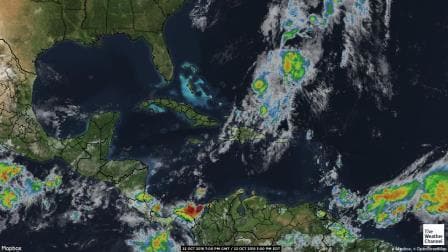
The frontal system is just coming over Hispaniola. We a bit of luck we might out run it if it moves slowly. (Photo courtesy, 22 Oct. 2016 The Weather Channel)
